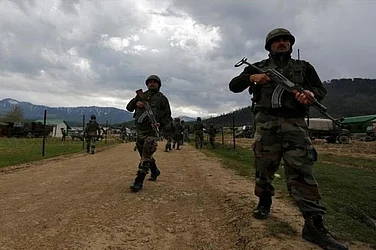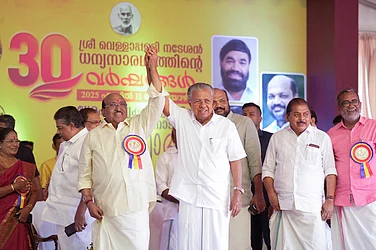After lying low for over six months, the banned National Democratic Front of Bodoland (NDFB) has sent terror waves again through Assam, killing at least 31 people in two separate incidents in the second half of January. The latest militant strikes have rattled the state's security apparatus, so much so that it's now looking at alternative strategies to deal with the spiralling violence. The attack also comes at a time when Army presence in Assam has been considerably reduced since troops have been redeployed in the western sector along the Indo-Pak border.
In a January 22 incident, a group of heavily armed NDFB cadres raided the Jangalbari village under Udalguri police station, dragged people out of their houses, lined them up and opened indiscriminate fire—killing 12 on the spot. Among the injured, six succumbed later. All the victims were poor Biharis. Earlier, on January 15, the NDFB had swooped down on a Bengali village and killed 12 people.
In both cases, the heavily armed groups crossed over from their hideouts in Bhutan. Says Maj Gen Gaganjit Singh, general officer commanding of 21 Mountain Division, entrusted with counter-insurgency operations in Lower Assam: "The militants are choosing the most vulnerable targets, and those close to the international boundary. After carrying out the killings, they simply cross over to the other side. In the second incident, for instance, our troops were at the spot in less than 45 minutes and yet the killers were already across the border. Once they cross, there is nothing we can do."
The Jan 15 and Jan 22 strikes were in Lower Assam's Bongaigaon and Darrang districts and the victims were non-Bodos. Even the points of attack were chosen carefully. Both places are relatively inaccessible and close to the international boundary with Bhutan. The NDFB, with at least 15 camps in the jungles of southern Bhutan close to the Lower Assam districts, has adopted the hit-and-run tactic in the last three-four years. The aim, as a senior police official says, is to "derive maximum benefit from the least effort". Many non-Bodos stay in remote corners of the districts along the border and officials point out that security agencies find it very difficult to police each hamlet. The NDFB, taking advantage of this, has struck at will as it did in the past fortnight.
There is one more reason for the stepped up attacks. With Republic Day around the corner, a massacre is one way of drawing public attention to the Bodo cause. Every year throughout the Northeast, most militant groups call for a bandh and boycott of Independence Day and Republic Day, protesting against what they call the "illegal occupation of the region by Indian colonial forces". The security forces' entire focus a month prior to these days is concentrated on preventing "untoward" incidents, especially in the state capitals and important urban centres, which in turn leaves security gaps in some of the remote areas.
The NDFB, which has been around since the mid-'80s, is regarded as one of the more potent militant outfits in the region with considerable striking power. It is a group that has seen the least amount of desertions and surrenders among the Northeast outfits and so very little intelligence exists on the group's real strengths and weaknesses.
The state government, aware of these practical difficulties, has blamed New Delhi for failing to exert enough pressure on Bhutan to evict the militant camps across the border. Says chief minister Tarun Gogoi: "So long as militants continue to find safe haven in Bhutan, we'll have a difficult time." He has even suggested that the Centre construct a permanent boundary wall along the Assam-Bhutan border to prevent the free movement of militants.
Some analysts also say that the NDFB has stepped up its campaign fearing the possibility of another group—the Bodo Liberation Tigers (BLT)— coming to an agreement with the Centre.The agreement, likely to envisage the formation of an autonomous council under the provisions of the Sixth Schedule of the Constitution, could come together in the next two months.
The NDFB and BLT have been bitter rivals and have indulged in fratricidal clashes in the past. The former, operating from camps in Bhutan, wants an independent nation while the BLT has been fighting for more autonomy for the Bodos. The Bodos inhabit most of the Lower Assam districts, a gateway to the Northeast. But U.G. Brahma, adviser to the influential, more moderate All Bodo Students Union (ABSU), is critical of the NDFB. "The NDFB's activities are an extension of its anti-national campaign and nothing to do with the likely Bodo accord," he says. As of now, the NDFB's chances of jeopardising the accord is not known. But if the panic among the sizeable non-Bodo populace in Lower Assam is any indication, it looks like it's succeeding.
Border Runs
Bhutan-based Bodo outfit NDFB spreads terror among non-Bodos in Lower Assam

Border Runs
Border Runs
Published At:
MOST POPULAR
WATCH
MORE FROM THE AUTHOR
PHOTOS
×

















